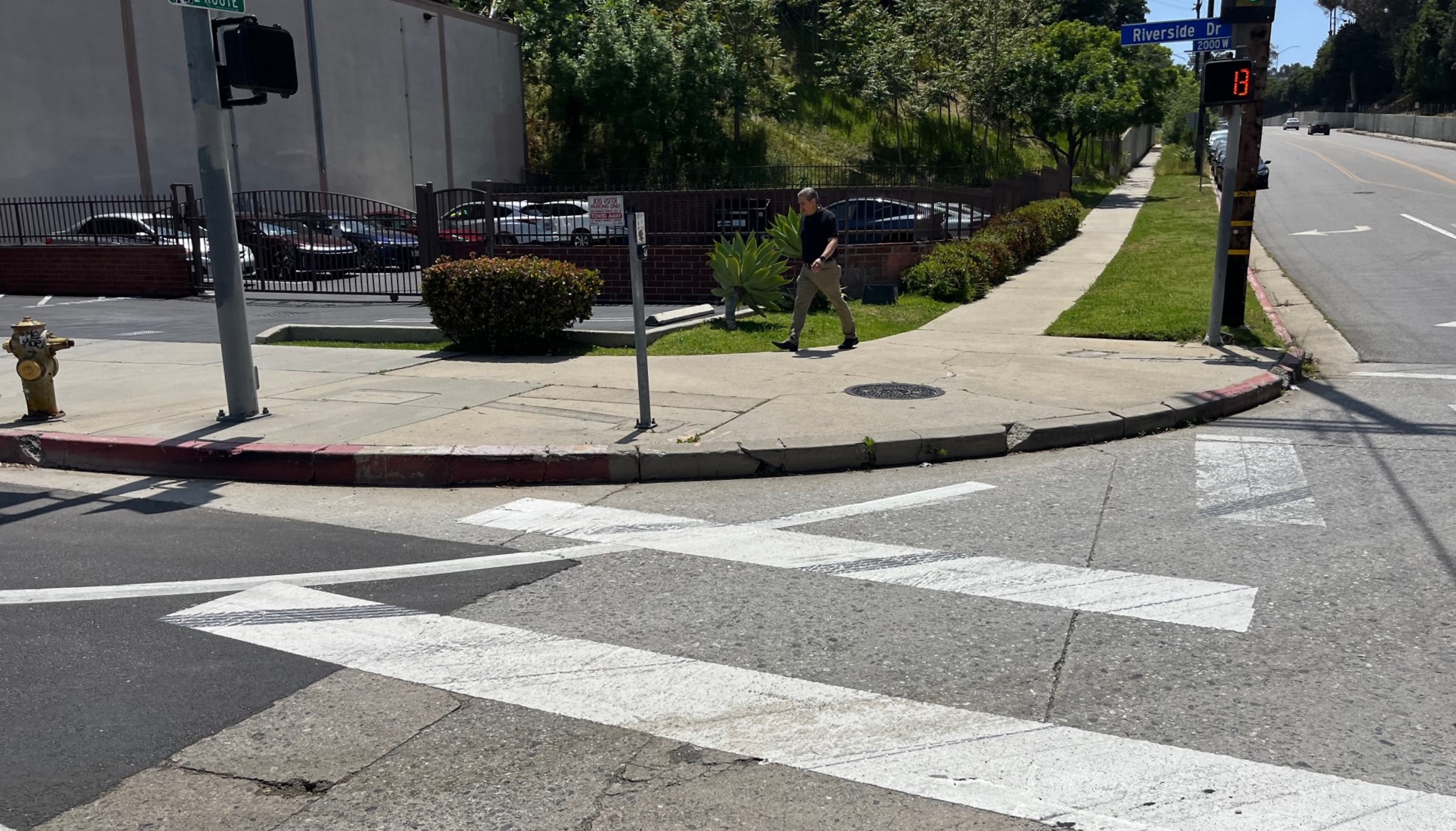It should not come as a surprise that L.A. City continues to neglect sidewalk accessibility. A couple months ago, city leadership claimed otherwise, but results on the ground show that claim to be false.
In the lead-up to voters approving Measure HLA, city leaders (ones opposed to HLA) floated wildly inflated HLA cost figures. They further asserted that HLA expenses would impact various city programs - from ADA compliance to Vision Zero to first/last mile improvements at Metro stations.
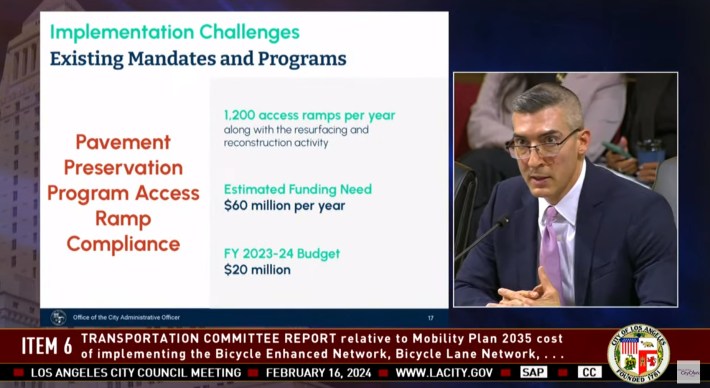
The critique was along the lines of "the city won't be able to afford ADA compliance because HLA will force the city to spend money complying with ADA." There are lots of contradictions there - see SBLA critiques at the time. Mostly it is difficult to imagine the city doing worse than its past anemic performance on accessibility, Vision Zero, and first/last mile. That's what led to HLA. Improving those programs are significant parts of what HLA mandates.
One odd claim was that the city was already going all out to install legally required ADA compliant curb-ramps during street resurfacing.
Here is the assertion verbatim, from the February 16 City Council meeting [video - exchange at 3:15:50]: (bold added)
Council President Paul Krekorian: "With regard to ADA compliance, can you talk about the interface between the Willits lawsuit obligations, the requirements of the new federal interpretations regarding ADA compliance when streets are resurfaced, and our curb cut backlog for ramps and how all those things interface with one another, and how they would [impact] implementation of the Mobility Plan?"
City Administrative Officer Matt Szabo: "In general, when we are conducting work and when there is work on the street, or when there is work on the sidewalk, we are required to ensure that the entirety of the sidewalk is ADA compliant. If we touch it, it has to be compliant."
Bureau of Streets Services (StreetsLA) General Manager Keith Mozee added, "Any time we do street resurfacing, it is considered an alteration, which requires ADA ramps to be installed."
Note that all this was in the present tense in February; none of it was "if HLA passes."
At the time, SBLA reported that, during resurfacing, ADA ramps had been clearly legally mandated since at least 2013. And that the city of L.A. had not fully complied with ADA in the past, under longtime street maintenance efforts ( StreetsLA's Pavement Preservation Program - PPP) that heavily prioritized roads, not sidewalks. To StreetsLA's and accessibility advocates' credit, in recent years, the city included (and gradually increased) a modest ADA ramp component of PPP.
But was StreetsLA really, in Mozee's words, "installing ADA ramps any time we do resurfacing"?
The short answer is "no".
Streetsblog has been tracking recent city resurfacing projects. After Mozee's February claims, the city resurfaced portions of Riverside Drive and Sierra Street. Both these repaving projects left non-ADA compliant curbs unchanged.
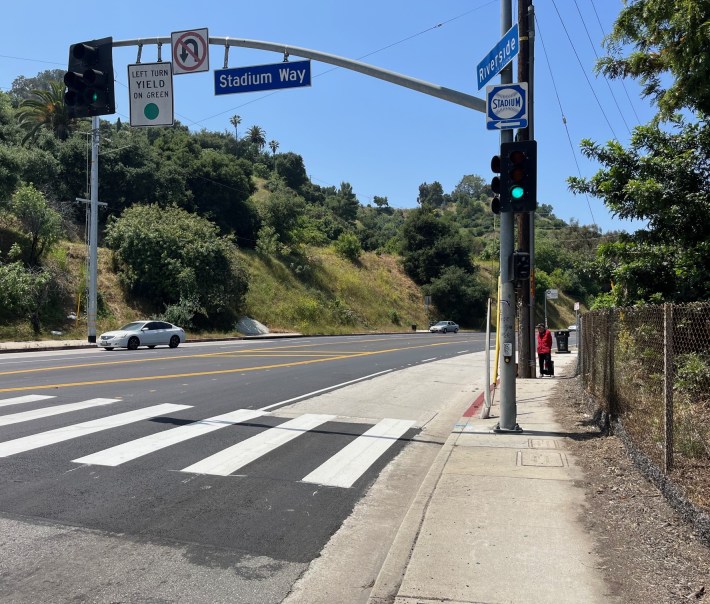
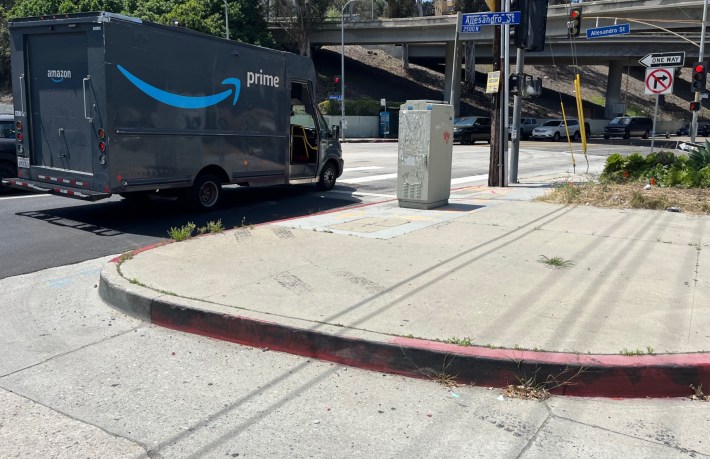
In March, StreetsLA repaved Riverside Drive from Allesandro Street to Stadium Way in Elysian Valley. Sidewalks there - at Stadium and at Allesandro - were not made ADA compliant.
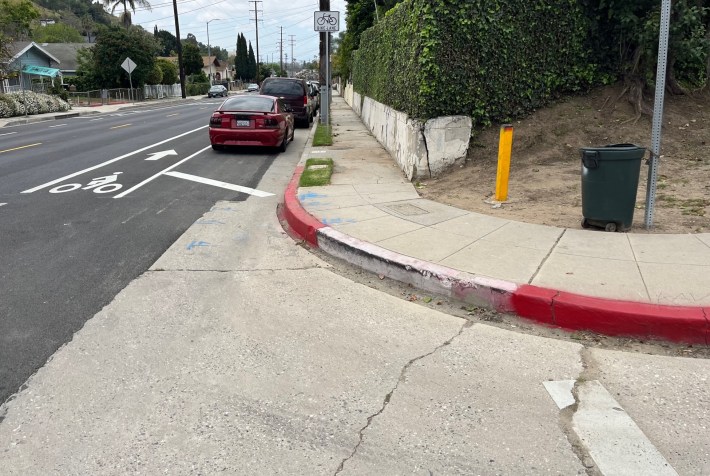
In early 2024, StreetsLA repaved Sierra Street in Happy Valley (adding what is perhaps the first HLA era bikeway). Sidewalks there - at Gillig Avenue and at Flora Avenue - were not made ADA compliant.
Maybe the city will come back later and add these missing ramps? It sure doesn't look like "If we touch it, it has to be compliant."
SBLA twice asked StreetsLA's communications staff to clarify the department's resurfacing and ADA work practices, but received no response beyond "We will follow up."
Added 5/3 3:40 p.m.: Shortly after this post was published StreetsLA spokesperson Paul Gomez responded that "These [Sierra Street] ramps are in the design phase. StreetsLA is working through issues related to the existing utilities. Once design is complete, construction will be scheduled." For what it's worth, the StreetsLA PPP webpage shows both Riverside and Sierra repaving projects status as "completed."
For decades the city gave short shrift to sidewalks and accessibility. Despite testimony to the contrary in February, that continues today.
